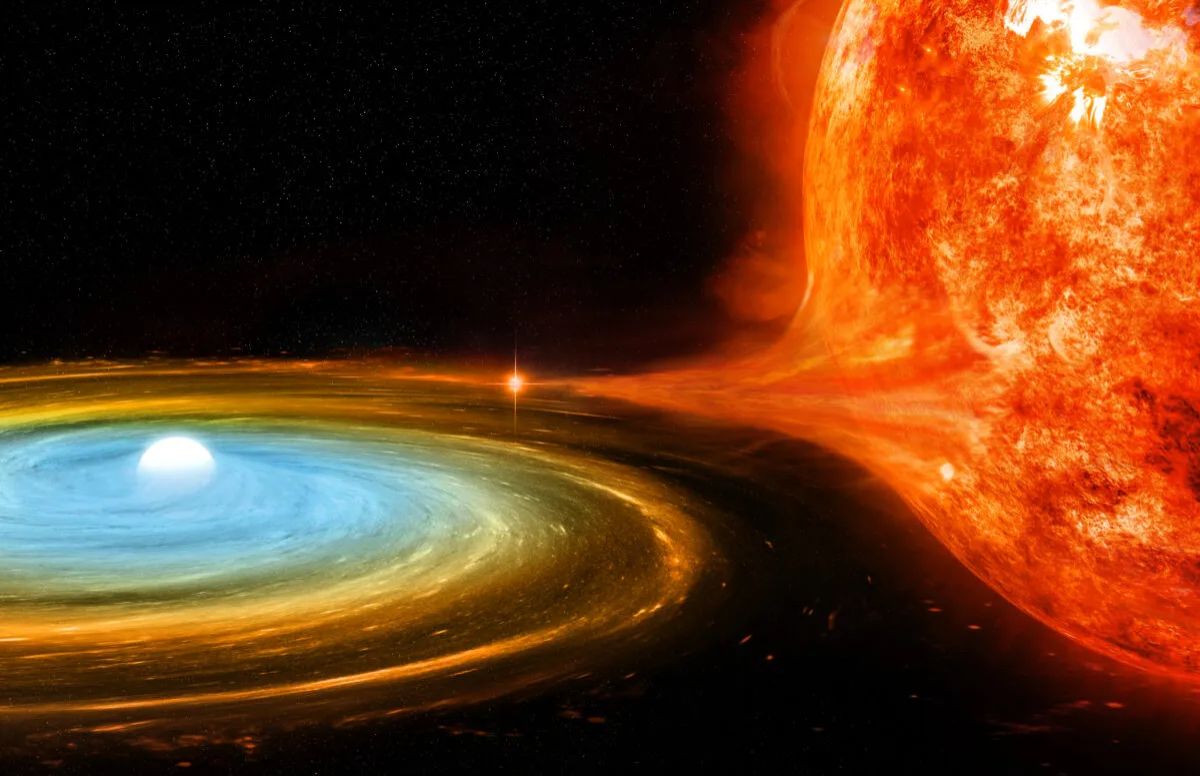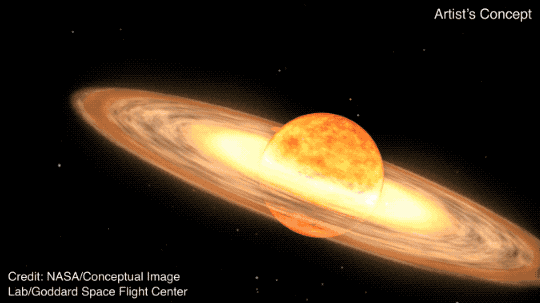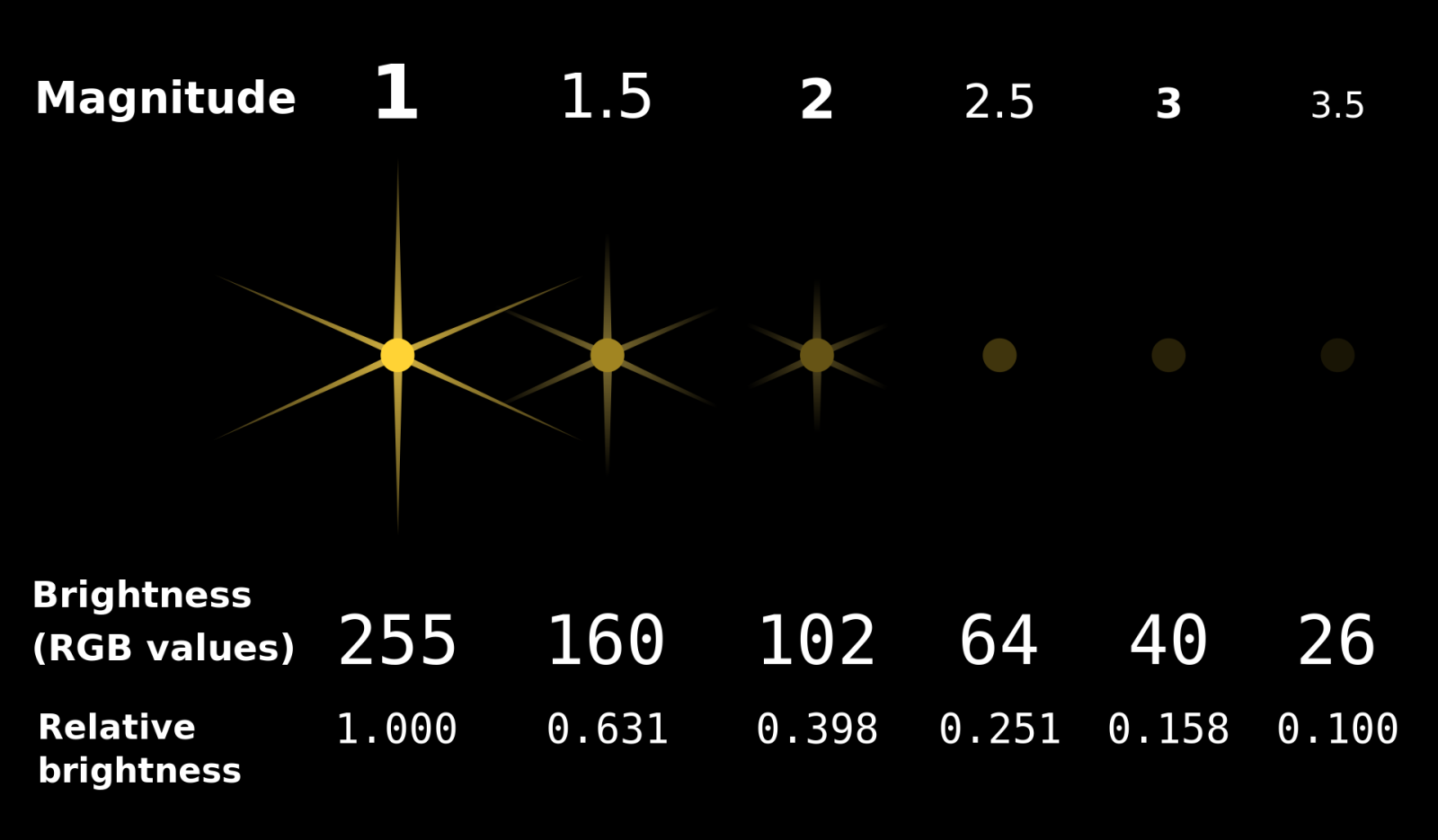Follow us on Google News (click on ☆)

Artist's impression of a white dwarf capturing matter from its red giant companion.
Credit: NASA/CXC/M.Weiss
Located 3,000 light-years away, T Coronae Borealis is a recurrent nova. These binary systems, composed of a red giant and a white dwarf, are distinguished by periodic explosions. About every 80 years, the Blaze Star undergoes a dramatic increase in brightness. The last explosion of this type occurred in 1946.
Astronomers predict that T Coronae Borealis could increase from magnitude +10 (invisible to the naked eye) to +2 by September 2024, reaching a brightness comparable to that of Polaris. To locate this star, one must observe the constellation Corona Borealis, situated between Boötes and Hercules.
The Blaze Star's exceptional behavior is due to the interaction between its two constituent stars. The red giant periodically transfers matter to the white dwarf, causing an explosion when this matter reaches a critical mass. This phenomenon, followed by an intense emission of light, makes it a subject of fascination for astronomers.
Since 2015, T Coronae Borealis has shown signs of increasing brightness, followed by dimming in March 2023. This pattern is similar to that observed before the explosions of 1866 and 1946, suggesting an imminent new explosion.

An illustration of a binary system like T Coronae Borealis, also known as the Blaze Star.
Credit: NASA's Goddard Space Flight Center
When the explosion occurs, T Coronae Borealis is expected to be visible to the naked eye for several days. This unique opportunity will allow everyone, equipped with binoculars or small telescopes, to observe a recurrent nova in full activity.
Stellar magnitude: a scale for measuring the brightness of stars
Stellar magnitude is a logarithmic scale used in astronomy to quantify the brightness of stars and other celestial objects. This scale, invented by the Greek astronomer Hipparchus in the 2nd century BCE, is based on the principle that the brightest stars have a lower magnitude.
On this scale, each decrease of 1 point in magnitude corresponds to an increase in brightness of about 2.5 times. Thus, a magnitude 1 star is approximately 2.5 times brighter than a magnitude 2 star, and 100 times brighter than a magnitude 6 star. Magnitudes can also be negative for extremely bright objects: for example, the apparent magnitude of the Sun is -26.7, while that of the full Moon is -12.6.
There are two types of magnitude: apparent magnitude and absolute magnitude. Apparent magnitude measures the brightness of an object as seen from Earth, without accounting for distance. In contrast, absolute magnitude measures an object's intrinsic brightness, standardized to a distance of 10 parsecs (approximately 32.6 light-years).
The use of stellar magnitude allows astronomers to compare the brightness of stars and other celestial objects consistently, facilitating the study of the Universe.
